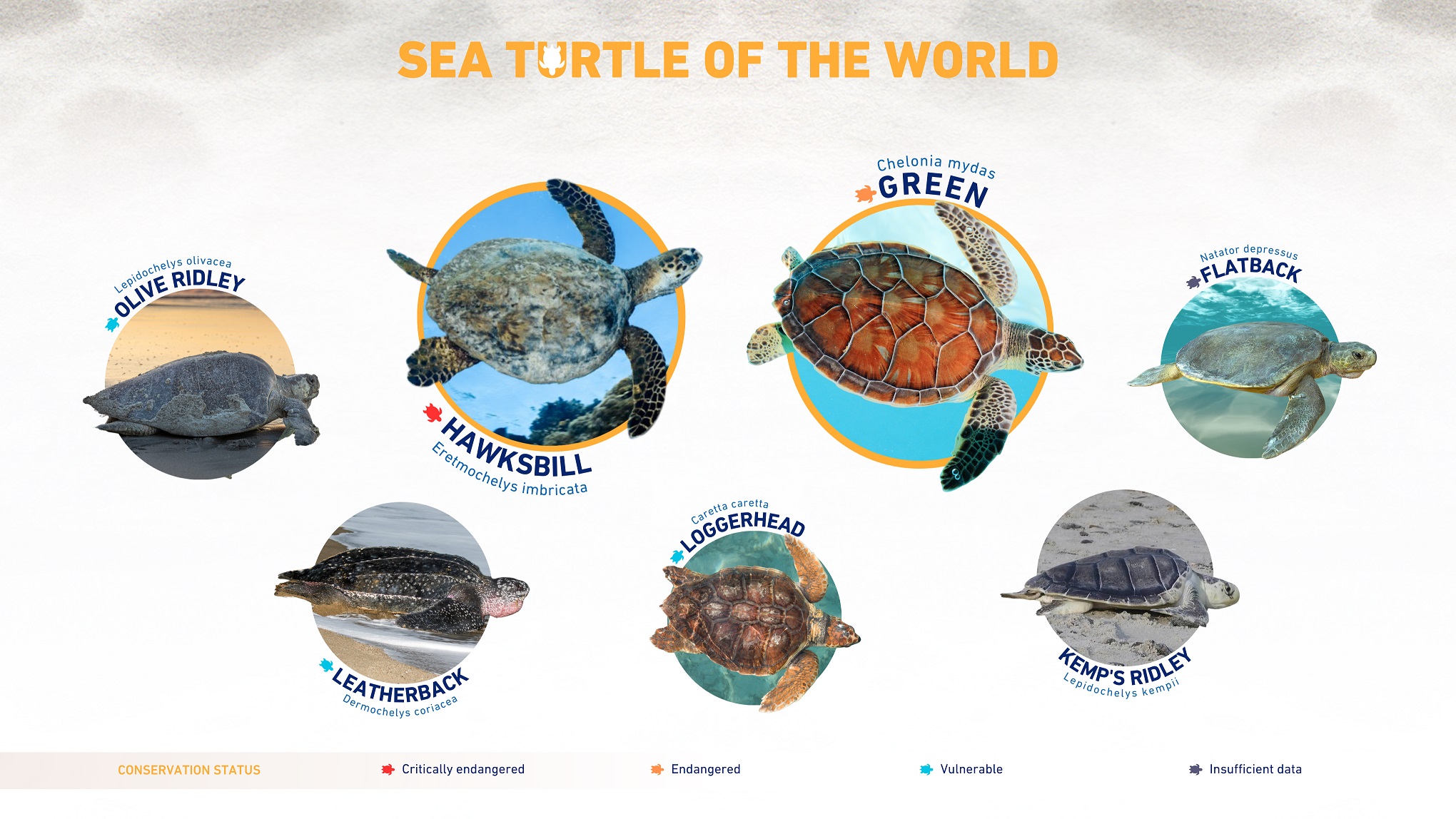Sea turtles have an interesting life cycle with distinct stages of living both in the sea and on land, including long migrations between oceans. Females lay clutches of eggs on sandy beaches, where they incubate for several months under the influence of the sun's heat. When they eventually emerge from the nest, hatchlings instinctively navigate towards the ocean, beginning a journey in the open ocean known as the "lost years".
SEA TURTLE BIOLOGY

Sea turtles serve as remarkable examples of biological evolution and the adaptation of organisms to diverse environments. Their lineage extends back over 100 million years, during which these reptiles evolved to thrive in various marine ecosystems worldwide, from warm tropical waters to colder regions.
There are seven extant species of sea turtles today, six of which belong to the family Cheloniidae. These include the green sea turtle, primarily herbivorous; the hawksbill sea turtle, feeding on sponges and soft corals; the loggerhead sea turtle, with a diet encompassing a variety of marine organisms and plants; and the flatback sea turtle. The seventh species, the leatherback sea turtle, is the largest of all sea turtles and lacks the hard bony shell characteristic of the others.
Sea turtles play a crucial role in maintaining marine ecological balance. Their diverse diets contribute to regulating the growth of algae and seagrass, and they serve as indicators of marine ecosystem health, being highly sensitive to environmental changes and pollution.

During this extended period, they can spend years drifting in ocean currents, feeding on plankton and developing into juveniles. After several years at sea, most species migrate towards coastal feeding grounds where they mature. Notably, adult females exhibit a remarkable behavior known as “natal homing”, returning to the same nesting beaches where they hatched to lay eggs themselves.

During this extended period, they can spend years drifting in ocean currents, feeding on plankton and developing into juveniles. After several years at sea, most species migrate towards coastal feeding grounds where they mature. Notably, adult females exhibit a remarkable behavior known as “natal homing”, returning to the same nesting beaches where they hatched to lay eggs themselves.

Despite their resilience, all sea turtles except the flatback are classified as globally vulnerable, endangered, or critically endangered on the International Union for Conservation of Nature (IUCN) Red List of Threatened Species. This alarming status highlights the significant threats facing these ancient mariners.


